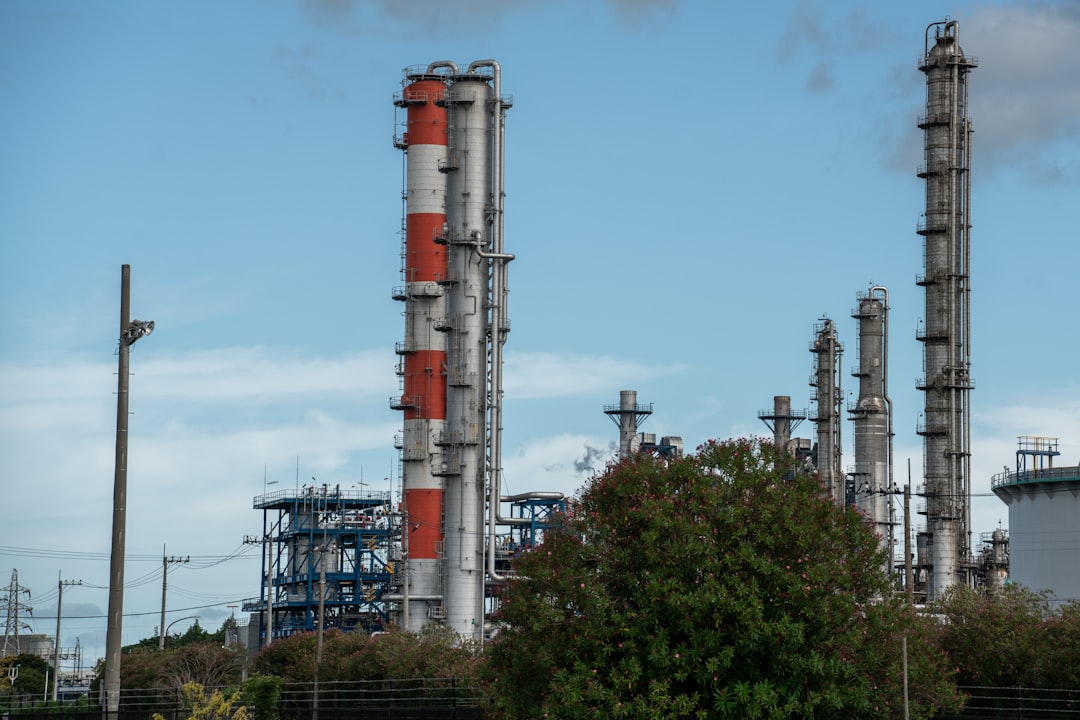

Engage prospects with a scan and streamline customer engagement with FREE QR code marketing tools by Sona – no strings attached!
Create a Free QR CodeFree consultation

No commitment

Engage prospects with a scan and streamline customer engagement with FREE QR code marketing tools by Sona – no strings attached!
Create a Free QR CodeFree consultation

No commitment
QR codes have evolved from novelty to essential tools in connecting offline interactions with digital engagement for activated carbon suppliers. When used strategically, a single scan can unlock instant access to technical data, certifications, pricing, and batch-specific documentation, while also capturing intent signals that traditional print materials cannot. This creates a faster, simpler, and more transparent experience for procurement teams, site engineers, and quality managers.
Activated carbon moves through complex supply chains spanning water treatment plants, environmental remediation projects, pharmaceutical manufacturing, and food processing across the activated carbon market. Yet many workflows still rely on static labels, paper catalogs, and manual callbacks. The result is missed opportunities from high-value prospects who never fill out forms, and too little visibility into which materials or placements influenced outcomes. QR codes bridge these gaps by making every label, drum, brochure, and event asset interactive and measurable.
A strategic QR program modernizes access to verified product data, streamlines compliance, and drives lead generation with dynamic remarketing. This guide explains how to deploy QR codes across your product lifecycle, integrate scans into your CRM and ad platforms, and attribute revenue to real-world engagement. With the right approach and a platform like Sona QR, every scan becomes a data-backed step toward stronger relationships and faster growth.

In activated carbon procurement, high-value prospects are often missed because their engagement is never captured. Printed catalogs get recycled, emails get lost, and on-site staff rarely have time to complete web forms on a desktop. QR codes connect offline assets such as packaging, brochures, drum labels, sample kits, and trade show displays to secure digital destinations. This gives buyers one-tap access to what they need while giving suppliers a clear view of who engaged, where, and why.
Replacing analog handoffs with QR-enabled journeys reduces friction across your pipeline. Static safety data sheets, price lists, and faxed order forms become living experiences that can be updated in real time. Procurement teams get batch-level documentation without hunting through shared drives. Sales and marketing get reliable signal capture without asking prospects to type URLs. Operations teams speed up reorders and support requests directly from the point of use.
For example, a QR code on a 1,000 lb drum can grant site engineers instant access to the batch’s Certificate of Analysis, recommended handling procedures, and reorder options. Another code on the delivery note can initiate a one-click replenishment request that pre-fills shipment data, which reduces errors and saves time. When managed with a platform like Sona QR that integrates with CRM and marketing tools, every scan is recorded and attributed, which creates a repeatable system for follow-up and optimization.

Activated carbon suppliers deal with long buying cycles, technical due diligence, and multi-stakeholder decisions. In that environment, too many touchpoints remain invisible. QR codes give manufacturers, distributors, and resellers a simple way to connect physical experiences to digital outcomes and to track what was previously untrackable. See Sona QR’s marketing guide.
On the buyer side, QR codes reduce friction and wait times. Plant managers and EHS teams need to validate specs, cross-check regulatory documentation, and ensure quality before greenlighting a purchase. A QR scan puts verified information in their hands on the spot. On the supplier side, QR data reveals which materials and placements generate the most meaningful engagement, so budgets can be shifted toward what works.
Materials commonly used in this industry become smarter: product catalogs can route scanners to version-controlled datasheets; sample packaging can offer a video walkthrough of application suitability; shipping documents can trigger automated replenishment forms. Together, these use cases deliver a connected journey that keeps buyers informed and engaged.

Activated carbon supply chains involve multiple functions from R&D and QA to procurement and operations. Different moments call for different QR formats. Selecting the right type ensures that scanners land in the exact experience needed to move forward.
While Wi‑Fi and app download codes are less common in this vertical, they can be useful at trade shows or training facilities. Sona QR supports all formats in a single dashboard, so you can standardize creation, editing, and reporting without juggling multiple tools.
Activated carbon suppliers frequently lose momentum after live interactions such as plant visits or trade shows. Many of these touchpoints are perfect candidates for QR activation because the buyer already has the item in their hands. Strategic placements turn passive surfaces into performance channels.
Use QR codes wherever your physical footprint intersects with buying intent. That includes the packaging and labels that travel with the product, the paperwork that accompanies delivery, and the collateral used by sales teams. When each placement is tagged with campaign metadata and connected to your CRM, the result is a measurable offline-to-online funnel.
When you place codes at these intersections, you surface buyer behavior that would otherwise remain hidden. Scans become early indicators of need, enabling faster follow-ups and better forecasting.

QR codes address common pain points such as untracked resource access, version control issues, and generic lead capture. Focus on a handful of high-impact cases that line up with your buyers’ daily tasks and your team’s goals.
Each of these use cases connects a specific offline moment to an appropriate digital action, with outcomes that can be measured over time. Prioritize those that create immediate value for operators and procurement teams, then scale across your product lines.
Every scan is an intent signal. When a water treatment engineer scans a drum label to check pore size data, or when a buyer scans a trade show sign to request pricing, they reveal what they need and when they need it. By placing unique QR codes across your journey stages, you can automatically segment scanners and launch relevant follow-ups.
Start by mapping your funnel. Use one set of codes for awareness such as trade show banners and direct mail, another set for consideration such as brochures and spec sheets, and a third for conversion such as quotes and reorder forms. With Sona QR, each code can carry campaign tags that feed into your CRM and ad platforms, which makes segmentation and retargeting straightforward.
Practical examples include different nurture tracks for lab evaluators versus operations leaders, and distinct remarketing for adsorbent types such as powdered versus granular activated carbon. With this approach, your media spend is focused on audiences that have demonstrated real intent rather than broad, unqualified lists.
QR codes are connective tissue across your marketing, sales, and service ecosystem. They unify the buyer journey by converting offline curiosity into trackable online actions, and they supply a continuous flow of data you can use to refine targeting, creative, and placement.
Activated carbon suppliers typically leverage print catalogs, trade shows, field sales kits, and shipment paperwork. Adding QR codes to these channels creates a closed-loop system where each interaction is measured and attributed. See Sona’s blog post on First-Touch vs Last-Touch Attribution Models for context on channel influence.
QR codes act as the offline onramp to your digital engine. With centralized management through Sona QR, you can monitor performance in real time, adjust destinations when offers change, and sync audience data across channels for consistent messaging.
A structured execution plan keeps your QR initiatives on time, on budget, and tied to outcomes. Use this checklist to align teams, assets, and analytics before you go live.
Start with a single, high-impact use case such as accelerating sample-to-quote conversion or simplifying batch traceability for quality teams. Confirm the action you want the scanner to take and the measurement you will use to define success.
Choose between static and dynamic codes. Static codes suit fixed content that never changes. Dynamic codes are best when you want to update destinations over time, capture analytics, or run A/B tests without reprinting.
Successful scans depend on clear design, strong contrast, and a prominent call to action. Ensure that the visual language aligns with your brand and the environment where the code will be scanned.
Roll out your codes to placements that align with your growth plan. Prioritize touchpoints where analog handoffs are weakest and where your buyers already interact with your materials.
Measure performance continuously. Use insights to refine creative, change destinations, and improve placements. Treat QR codes like a living campaign asset rather than fixed print.
This workflow turns weak points in your buyer journey into digital engagement opportunities. Over time, you will build a tested playbook that scales across product lines and regions. If forms are part of your flow, streamline capture with Google Forms.
Engagement is not enough. To prove impact and optimize spend, you need to connect scans to outcomes such as quote requests, sample orders, or replenishment. That requires consistent tagging, CRM integration, and multi-touch attribution across channels.
Many teams stop at the scan. They know a code was used, but not what happened next. With Sona QR for capture and Sona for attribution, you can link a QR interaction to downstream actions such as a form fill, a sales meeting, or an order. This closes the loop and turns QR into a performance channel rather than a novelty. See Sona’s blog post on Single vs Multi-Touch Attribution Models.
The result is a system that ties each physical engagement to measurable digital outcomes. Your team gains clarity on what to scale, what to adjust, and what to retire.
Strong QR programs combine clear calls to action, thoughtful placement, and automation. The goal is not simply to get scans; it is to turn those scans into momentum. Focus on the actions that remove friction for buyers and generate clean data for your team.
Invest in training as well as tooling. Field reps should know how to point buyers toward the right codes and explain the benefit of scanning. Warehouse and operations teams should understand where to place codes for maximum visibility and how to replace damaged labels quickly.
These techniques help capture otherwise lost demand, time your upsells to moments of highest relevance, and maintain the data integrity needed for steady optimization.

Turning analog engagement into digital leads is a consistent challenge in industrial supply chains. The following examples show how QR codes solve for speed, visibility, and attribution while improving customer experience.
These ideas illustrate how flexible QR implementations can close the loop across complex, multi-stakeholder journeys. Start with one or two and expand as you gather performance data.
QR success is driven by clarity and context. Scanners must know what they will get and why it matters. Teams must ensure that codes are visible, destinations are mobile friendly, and documentation is always current. Avoid rolling out QR codes without first planning for measurement and follow-up.
Common pitfalls include routing to generic homepages, burying codes near folds or seams, and letting content rot. Equally problematic is failing to train staff on when and how to encourage scans. A short, benefit-oriented explanation from a sales rep or driver can double scan rates in the field.
With these practices in place, your QR program will capture cleaner data, improve buyer experience, and deliver measurable ROI.
QR codes enable activated carbon suppliers to transform shipments, materials, and events into measurable digital opportunities. They facilitate instant access to certifications, pricing, and technical documentation, enhancing transparency, speed, and customer experience. By addressing critical industry challenges such as missing high-intent leads and lack of visibility into buyer activity, QR strategies become a core differentiator. With powerful tracking, dynamic management, and seamless CRM integration, every scan is a potential insight, turning hidden opportunities into high-value engagement in today’s rapidly evolving marketplace. Start creating QR codes for free.
QR codes have transformed the activated carbon suppliers industry by turning traditional product information and customer interactions into dynamic, measurable opportunities. Whether it’s streamlining product access, enhancing client education, or enabling real-time inventory tracking, QR codes replace static labels with instant, mobile-friendly connections that drive efficiency and engagement. Imagine your customers scanning a code to instantly access detailed product specs, certifications, or ordering portals—saving time and building trust at every touchpoint.
With Sona QR, you can create dynamic, trackable QR codes in seconds, update content without the need to reprint labels, and link every scan directly to valuable business insights. This means no missed leads, faster customer acquisition, and a seamless way to monitor engagement across your supply chain. Start for free with Sona QR today and transform every scan into a powerful driver of growth and customer satisfaction in your activated carbon business.
Activated carbon suppliers use QR codes such as web links, product datasheet links, contact forms, vCards, video demos, and dynamic codes to provide batch-specific data, capture leads, and deliver updated content.
Choose static QR codes for fixed content that does not change and dynamic QR codes when you need to update destinations, track scans, and integrate with CRM or marketing platforms.
QR codes create frictionless access to technical data, certifications, and pricing, improve buyer engagement, enable real-time updates, provide granular scan tracking, and help convert offline interactions into measurable digital outcomes.
Placing QR codes on high-visibility, context-relevant items such as drum labels, brochures, invoices, sample kits, and trade show signage maximizes scans, improves buyer experience, and generates actionable data.
By tagging QR codes with UTM parameters, tracking scan data like time, location, and device, integrating scan events into CRM systems, and analyzing conversion outcomes such as quote requests or orders.
Common use cases include batch traceability on drum labels, instant quote requests from print and events, digital product catalogs with version control, on-site support videos, and sustainability reporting.
QR codes provide instant access to batch-specific certificates of analysis, safety data sheets, and updated regulatory documentation, simplifying audits and ensuring up-to-date compliance materials.
Suppliers should define clear business goals, select appropriate QR code types, design codes with strong branding and calls to action, deploy codes in priority placements, and continuously track and optimize performance.
By assigning unique QR codes at different funnel stages and tagging scans with behavioral and contextual data, suppliers can segment audiences in their CRM and ad platforms for personalized follow-ups and remarketing.
Best practices include placing codes on flat, well-lit surfaces, linking to specific and current resources, training frontline staff to promote scanning, and regularly updating linked content to maintain trust and engagement.
Use Sona QR's trackable codes to improve customer acquisition and engagement today.
Create Your FREE Trackable QR Code in SecondsJoin results-focused teams combining Sona Platform automation with advanced Google Ads strategies to scale lead generation

Connect your existing CRM

Free Account Enrichment

No setup fees
No commitment required

Free consultation

Get a custom Google Ads roadmap for your business






Launch campaigns that generate qualified leads in 30 days or less.
